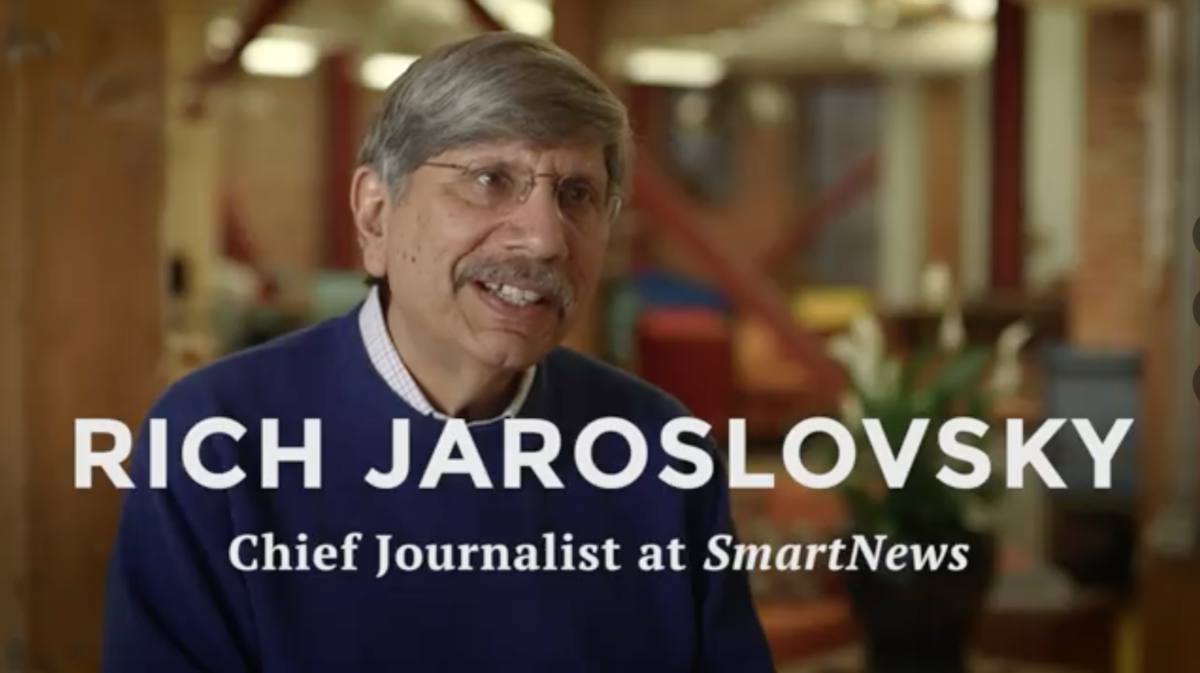There’s an on-going series of video interviews with journalists on the futureof.news site. Two recent interviews were with Rich Jaroslovsky, my boss at SmartNews. Rich and I crossed paths years ago. He not only has a good instinct for what works for media online but also a history in both the print and online journalistic worlds and the deep memory for how things are put together and came to be the way they are today.
It is a huge vote of confidence that he’s working for SmartNews and, as you can see from the clips below, he’s here for all the right reasons. Some key quotes to call out:
excessive personalization is a rabbit hole. It at some point becomes an active negative, because what ends up happening is that you never discover anything new, you never discover anything that didn’t know ahead of time you would be interested in, and instead your worldview gets narrower and narrower.
. . .
When we launched WSJ.com, one of my conclusions was, serendipity is very hard to do in a digital environment. One of the great charms of SmartNews is that it has reintroduced that concept of serendipity, of finding things that you didn’t know you’d be interested in, and they turn out to be very interesting.
. . .
I’ve had many epiphanies over the years about digital journalism and how it’s different than print journalism, and one of them is that there is a craving in the audience for authenticity, for hearing things as close to the original source as possible. There are people who want to be able to access content that is from international sources, even when they are reading about stories that are being heavily covered by US media because it provides a different viewpoint.
. . .
In some ways news has been disintermediated the same way that music was. When I was in my record buying heyday and CD buying heyday, if there was a song I really liked, I had to buy the record. I had to buy the CD. And the fundamental unit was that CD, that package. I had to buy the whole package to get that one song. Now if there’s a song I like, I can buy that one song. That’s a very different model, as the music industry has learned somewhat to its despair but is adapting to. In news the same thing has happened.
The brand is no longer a destination, a place that people go to to get news. The brand is a mark of quality on that story. This is a USA Today story, I know what USA Today standards are, therefore the fact that it says USA Today, which is one of our valued partners, on top of that story—that’s a brand of quality. I know what I’m getting here. Or an NBC story, or a Huffington Post story, or a Fox News story. So it’s a very different environment, and the brand is still extremely important, but the meaning has changed quite fundamentally.
finally
My greatest hope is the the flip side of that coin—that as journalism evolves, as new forms of journalism evolve, as new delivery mechanisms evolve, that the end product is a more informed person and a more informed populace. Because I think that an informed populace is the critical element to a successful, thriving democracy. So my great hope is that as journalism works through this period of turmoil and uncertainty, that we come out the other end with models that keep citizens informed, where people can always get the information they need to make informed decisions.
You can see the entire text of the interview on the futureof.news site. I’ve also embedded both video clips below.
Part One
Part Two

Leave a comment